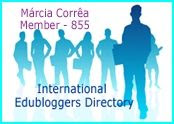How to Skim:
Read the title.
Read the introduction or the first paragraph.
Read the first sentence of every other paragraph.
Read any headings and sub-headings.
Notice any pictures, charts, or graphs.
Notice any italicized or boldface words or phrases.
Read the summary or last paragraph.
Scanning is a reading technique to be used when you want to find specific information quickly. In scanning you have a question in your mind and you read a passage only to find the answer, ignoring unrelated information.
How to Scan:
State the specific information you are looking for.
Try to anticipate how the answer will appear and what clues you might use to help you locate the answer. For example, if you were looking for a certain date, you would quickly read the paragraph looking only for numbers.
Use headings and any other aids that will help you identify which sections might contain the information you are looking for.
Selectively read and skip through sections of the passage.
(From College Reading and Study Skills and Academic Reading and Study Skills for International Students)
There are different styles of reading for different situations. The technique you choose will depend on the purpose for reading. For example, you might be reading for enjoyment, information, or to complete a task. If you are exploring or reviewing, you might skim a document. If you’re searching for information, you might scan for a particular word. You need to adjust your reading speed and technique depending on your purpose.
Many people consider skimming and scanning search techniques rather than reading strategies. However when reading large volumes of information, they may be more practical than reading. For example, you might be searching for specific information, looking for clues, or reviewing information.
Web pages, novels, textbooks, manuals, magazines, newspapers, and mail are just a few of the things that people read every day. Effective and efficient readers learn to use many styles of reading for different purposes. Skimming, scanning, and critical reading are different styles of reading and information processing.
Skimming is used to quickly identify the main ideas of a text. When you read the newspaper, you’re probably not reading it word-by-word, instead you’re scanning the text. Skimming is done at a speed three to four times faster than normal reading. People often skim when they have lots of material to read in a limited amount of time. Use skimming when you want to see if an article may be of interest in your research.
There are many strategies that can be used when skimming. Some people read the first and last paragraphs using headings, summarizes and other organizers as they move down the page or screen. You might read the title, subtitles, subheading, and illustrations. Consider reading the first sentence of each paragraph. This technique is useful when you’re seeking specific information rather than reading for comprehension. Skimming works well to find dates, names, and places. It might be used to review graphs, tables, and charts.
Scanning is a technique you often use when looking up a word in the telephone book or dictionary. You search for key words or ideas. In most cases, you know what you’re looking for, so you’re concentrating on finding a particular answer. Scanning involves moving your eyes quickly down the page seeking specific words and phrases. Scanning is also used when you first find a resource to determine whether it will answer your questions. Once you’ve scanned the document, you might go back and skim it.
When scanning, look for the author’s use of organizers such as numbers, letters, steps, or the words, first, second, or next. Look for words that are bold faced, italics, or in a different font size, style, or color. Sometimes the author will put key ideas in the margin.
Reading off a computer screen has become a growing concern. Research shows that people have more difficulty reading off a computer screen than off paper. Although they can read and comprehend at the same rate as paper, skimming on the computer is much slower than on paper.










